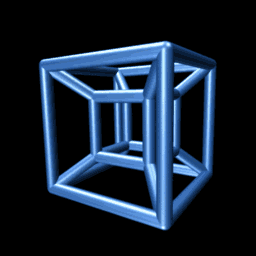It's been fifty years since Madeleine L'Engle's science fantasy novel, A Wrinkle in Time, was first published. Rejected at least 26 times by publishers before finally being accepted for publication in 1962, it's been continuously in print ever since. Marketed as a young adult novel (probably on account of its teenage protagonist), it's gone on to become a beloved classic for readers of all ages.
Describing the premise of this weird, wild, wonderful book can be tough, because there's no way to do such a unique story justice in a simplified summary. Suffice it to say, the book centers around Meg Murray, an awkward (and somewhat angry and stubborn) high school student. Living in a tiny rural town, she's lost at school but takes comfort in the understanding of her family: her biologist mother, her ten-year-old twin brothers -- and most especially her five-year-old brother, Charles Wallace, who is (to put it mildly) something of a child prodigy.
Her physicist father, however, is missing -- last seen leaving home on special assignment for the government. It's in Meg and Charles Wallace's attempt to find him (with the help of classmate Calvin O'Keefe, and three highly unusual neighbors) that the book finds its story, but to say more would be to give too much away. It quickly becomes apparent, however, that Meg's missing father is far enough away that finding him will involve a bit of traveling. Or, if you will, tessering.

What follows is a story about wormholes and missing laundry, alien planets and physics homework, time travel and midnight sandwich snacks. It's a delightfully bizarre and flawless melding of the ordinary and the extraordinary, of the daily routine and the outrageously unusual, that plays a large part in making this such a unique story (even by the standards of sci-fi!).
The book also has more unique messages than what might is often found in the standard sci-fi fare: the importance of family and relationships, that stubbornness and anger can occasionally be great gifts (if you can only use them correctly) -- and that we don't have to all be exactly alike to be equal to each other.
There's also some light -- but undeniable -- religious allegory in its pages, as issues of faith and belief are explored (albeit of an unorthodox-enough nature that L'Engle joins the ranks of such authors as J.K. Rowling and Judy Blume for having her books occasionally challenged and banned). Science and faith co-exist quite easily in the pages of L'Engle's Time Quartet (which is not to say that you need to be a religious sort to enjoy her writing).
But even more unusual at the time than her gentle blending of science and faith was L'Engle's decision to make the main protagonist of her science fiction tale ... female. Even before Anne McCaffrey and her sci-fi heroines, L'Engle had broken new ground by featuring a young girl as her main character. For this reason (among others), her publishers were unsure if the book would sell -- so it was a surprise to everyone when the book not only became a hit but won the Newbery Award in 1963.
To the book's millions of fans, however, it's not surprising at all. If you've never read this unique story, you might consider giving it a try in celebration of its fiftieth anniversary. From Camazotz to tesseracts, L'Engle's classic has something unique for every sci-fi fan.
"A Wrinkle In Time" In 90 Seconds from James Kennedy on Vimeo.
-- Post by Ms. B



No comments:
Post a Comment